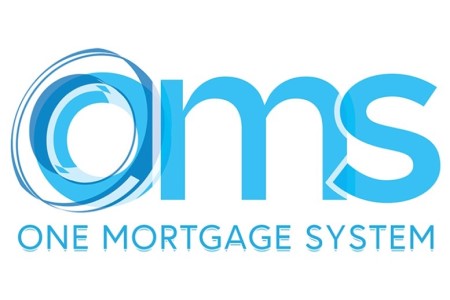
Whether you’re a first-time buyer or a buy-to-let landlord, finding the right property finance is vital. When considering what lender to go for, you have two options. On the one hand, you could go for a one size fits all approach on the high street with a mainstream lender. On the other hand, you might want to consider alternative lending options. However, many people might wonder, what is alternative lending?
To explore this further, we will answer the following questions:
- What is alternative lending?
- How does it work?
- What are the different types of alternative lending?
- How is alternative lending different to traditional banking?
- What do you need in order to work with an alternative lender?
- What are its advantages and challenges?
- How to choose an alternative lender
What is alternative lending?
In simple terms, alternative lending provides finance solutions to a certain type of borrower. These borrowers usually don’t fit into the typical criteria that high street banks and lenders might look for when supplying a loan or mortgage. You might be a first-time investor, from overseas, already receiving a pension, have an adverse credit history or no UK footprint. In such circustmances, alternative lenders are a lot more flexible in their lending approach than mainstream ones.
How does it work?
Alternative lending grew in popularity following the 2008 financial crash. It filled the void that many banks left in the market and provides investors, borrowers and middle-market businesses with speedier and more flexible loans.
Generally, alternative lenders can provide loans that range anywhere from £5,000 to £50 million. Normally, they last for around three to five years.

Types of alternative lending
Alternative lending is often much more flexible than high street lenders. From bridging loans to buy-to-let mortgages, alternative lenders can provide you with bespoke finance solutions to suit their funding requirements.
1. Bridging loans
A bridging loan is a form of specialist finance that provides you with fast and flexible finance for your property investments. These short-term loans help to bridge the gap between payments. As such, you or your company might use them to:
- Secure an asset while you arrange a long-term financial solution
- Bridge the gap between the sale of a property and the completion of a new one
- Finance a quick renovation project
- Purchase a property at auction
Typically, these loans can last from 3-24 months. You can find out about MFS’ different types of bridging loans here.
2. Buy-to-let mortgages
Buy-to-let mortgages are specialist mortgages designed to help landlords to buy a property that will be used as a rental home. These have slightly different rules to a normal mortgage and can provide optionality and breathing space between bridging loan exits or initial purchases and future long-term finances.
Moreover, buy-to-let mortgages can be provided for holiday and short-term lets, investors with impaired credit, expats and foreign nationals or companies. Learn more about MFS’ buy-to-let mortgages here.

How does alternative lending differ to high street banks?
Alternative lenders tend to deliver greater flexibility and speed than high street banks. Mostly, they are used by businesses and investors who have a shorter track record, complex circumstances, require specialist products, lack collateral or just need the money quickly.
Unlike high street banks, alternative lenders underwrite their loans manually. This allows them to approach each application on a case-by-case basis. Therefore, the full nature and complexities of an applicant’s personal and financial situation can be taken into consideration. As such, alternative lending can provide borrowers who don’t fit into the traditional high street lending model with greater accessibility to finance solutions. However, the personalised approach to lending increases the risk to the lender, so higher rates are more common when using an alternative lender.
What do I need to work with an alternative lender?
Lenders’ eligibility may vary, but typically all applicants will need to submit proof of identity and proof of address. Lenders will also require evidence of affordability as well as a proof of the value of the property the loan will be secured against.
See the criteria that we apply here at MFS.

Advantages and challenges
Most alternative lenders have streamlined their loan application process. Indeed, many lenders use tech and online applications that speed the process up even more. As such, a key advantage of using alternative lending is the quick and easy application process.
Similarly, the funds can be dispatched to you much more quickly than a high street bank. At MFS, for example, you can receive your loan in as little as three days.
Another advtange of alternative lending are the more flexible borrower requirements. You can secure finance despite a poor credit score. So if you didn’t manage to get finance on the high street, alternative finance is more likely to provide a loan.
Finally, you might need financial products to grow your business or property portfolio regularly. In this case, you can build relationships with the right lender and broker to access lower rates.
However, there are some challenges that you should be aware of.
Mostly, alternative lenders place higher interest rates on a loan than a high street bank might. If there are any unforeseen obstacles, you might struggle to pay the monthly instalment payments on time and build up higher levels of debt. This increases the risk for the lender.
Moreover, some alternative lenders may charge hidden fees. As such, it’s vital that you find a transparent lender that informs you of all costs at the start of the application process.
How to choose an alternative lender
As with any financial decision, careful consideration is needed to find a lender that suits you best. Here at MFS, we pride ourselves on our flexibility and ability to offer financial options in even the most complex cases. We do not use an automated, tick-box approach to making decisions. Instead, we judge each application on its individual merits.
For example, you are a landlord with a poor credit score and want to convert a dilapidated building into a buy-to-let property. You might struggle to get finance from a high street lender due to your stringent criteria. However, our approach allows us to factor in the future profitability of your property, reducing risk and allowing us to take on applications that other lenders might shy away from.
Transparency is key. At MFS, we underwrite our deals from day one. This means that by the time we have come to an agreement with you, all the rates and costs are clearly laid out in black and white. So you can feel comfortable that you will not encounter any surprise fees.
Use bridging loan calculator to get instant insight into the interest rates, charges and other costs associated with our bridging loans. Similarly, check our bridging loan rates table to find out what the cost of a bridging loan with MFS would be. With these tools on hand, you can rest assured that MFS will deliver the best financial option to you.
To find out more, get in touch.
Disclaimer
MFS are a bridging loan and buy-to-let mortgage provider, not financial advisors. Therefore, Investors are encouraged to seek professional advice.










